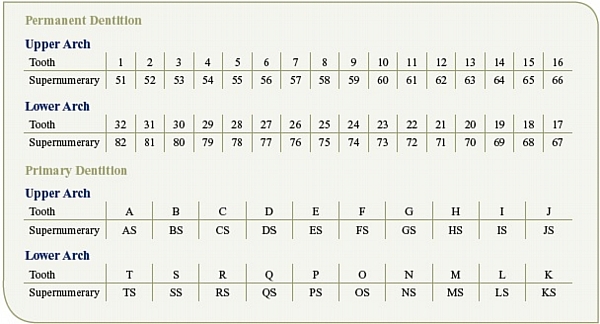Identifying Supernumerary Teeth
A supernumerary tooth is an extra tooth beyond the 32 teeth in the permanent dentition or 20 teeth in the primary dentition. The existence of extra teeth can create confusion when filing claims. Appropriate teeth numbers or letters are required when reporting dental procedures on supernumerary teeth.
Permanent Dentition
For the permanent dentition, supernumerary teeth are identified by numbers 51 through 82. The numbering system follows the same pattern as the usual tooth numbers. Numbering begins in the upper right quadrant in the area of the third molar and continues to the upper left, then down to the lower left quadrant, and across to the lower right, ending in the third molar area.
An easy way to determine the tooth number is to identify the tooth area of the supernumerary tooth and add 50 to that tooth number. For example, if the supernumerary tooth is adjacent to tooth #19 then it will be documented and reported on the claim form as tooth #69 (19 + 50 = 69).
Primary Dentition
For the primary dentition, supernumerary teeth are identified by the letter “S.” Simply identify the area of the supernumerary tooth and add “S” to the tooth letter of the tooth adjacent to the supernumerary. For example, if the supernumerary tooth is adjacent to tooth “A,” then the supernumerary tooth is documented and reported as “AS.”
See the charts below demonstrating the numbering system used for both the permanent dentition and the primary dentition.


